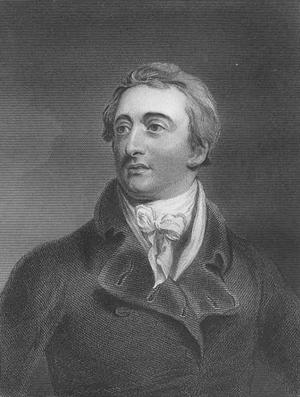William Bentinck
 | |||||||||||||||||||||||
| Born | 14 September 1774 Buckinghamshire, England | ||||||||||||||||||||||
| Died | 17 June 1839 (Age 64) Paris, France | ||||||||||||||||||||||
| Nationality | British | ||||||||||||||||||||||
| Alma mater | Westminster School | ||||||||||||||||||||||
| Parents | William Cavendish-Bentinck 3. Duke of Portland | ||||||||||||||||||||||
| Spouse | Lady Mary Acheson | ||||||||||||||||||||||
| Party | Whig | ||||||||||||||||||||||
| |||||||||||||||||||||||
Lieutenant General Lord William Henry Cavendish-Bentinck, known as Lord William Bentinck, was a British soldier and politician who was governor of Fort William (Bengal) from 1828 to 1834 and the first Governor-General of India from 1834 to 1835.
Military career
William Bentinck was the second son of the Prime Minister William Bentinck, 3rd Duke of Portland (1738-1809) from his marriage to Lady Dorothy Cavendish.
After serving as an officer with various units of the British Army from 1791, he became governor of Madras in 1803. In 1805 he was promoted to the rank of major General and in 1807, after the mutiny in Vellore, he was recalled from Madras.
Bentinck fought in the Napoleonic Wars on the Iberian Peninsula, and became commander of the British troops in the Kingdom of Sicily. The then king of Naples and Sicily, Ferdinand, had to retreat to the island of Sicily after his kingdom of Naples was occupied by the French in 1806. Bentinck contributed significantly to the fact that King Ferdinand abdicated in favor of his son, Francis under pressure from the British government in 1812 and Queen Maria Karolina was expelled from the country. However, the attempt to give the island a liberal constitution and a British-style parliament ultimately failed. In 1813 he landed in Catalonia, but after the lost Battle of Villafranca he had to lift the siege of Barcelona and embark again. In 1814 he landed in Naples as commander-in-chief of the British troops in the Mediterranean, where he persuaded Joachim Murat to form an alliance against his brother-in-law Napoleon. He then landed at Livorno in March 1814 and took Genoa in April. He commenced to make liberal proclamations of a new order in Italy which embarrassed the British government. He came under the criticism of the British Prime Minister Lord Liverpool and was finally dismissed as commander-in-chief in April 1815.
India - Official narrative
On his return to England, Bentinck seat in the House of Commons for some years before being appointed Governor-General of Bengal in 1828. His principal concern was to turn around the loss-making East India Company, to ensure that its charter would be renewed by the British government.
Bentinck has been credited for significant social and educational reforms in India including abolishing sati, suppressing female infanticide and human sacrifice. Bentinck said that "the dreadful responsibility hanging over his head in this world and the next, if… he was to consent to the continuance of this practice (sati) one moment longer." Bentinck after consultation with the army and officals passed the Bengal Sati Regulation, 1829 there was little opposition.[3] The only challenge came from the Dharma Sabha which appealed in the Privy Council however the ban on Sati was upheld.[1] He ended lawlessness by eliminating thuggee – which had existed for over 450 years – with the aid of his chief captain, William Henry Sleeman. Along with Thomas Babington Macaulay he introduced English as the language of instruction in India.[2] Bentinck removed flogging as a punishment in the Indian Army.[3]
References
- ↑ John Clark Marshman (18 November 2010). History of India from the Earliest Period to the Close of the East India Company's Government. Cambridge University Press. pp. 357–. ISBN 978-1-108-02104-3. Retrieved 7 May 2020.
- ↑ Olson, James S.; Shadle, Robert S., eds. (1996). "Bentinck, Lord William Cavendish". Historical Dictionary of the British Empire. Vol. 1. Greenwood Press. p. 131. ISBN 0-313-29366-X.
- ↑ S. K. Aggarwal (1 February 1988). Press at the crossroads in India. UDH Publishing House. p. 17. ISBN 978-81-85044-32-3. Retrieved 3 May 2018.